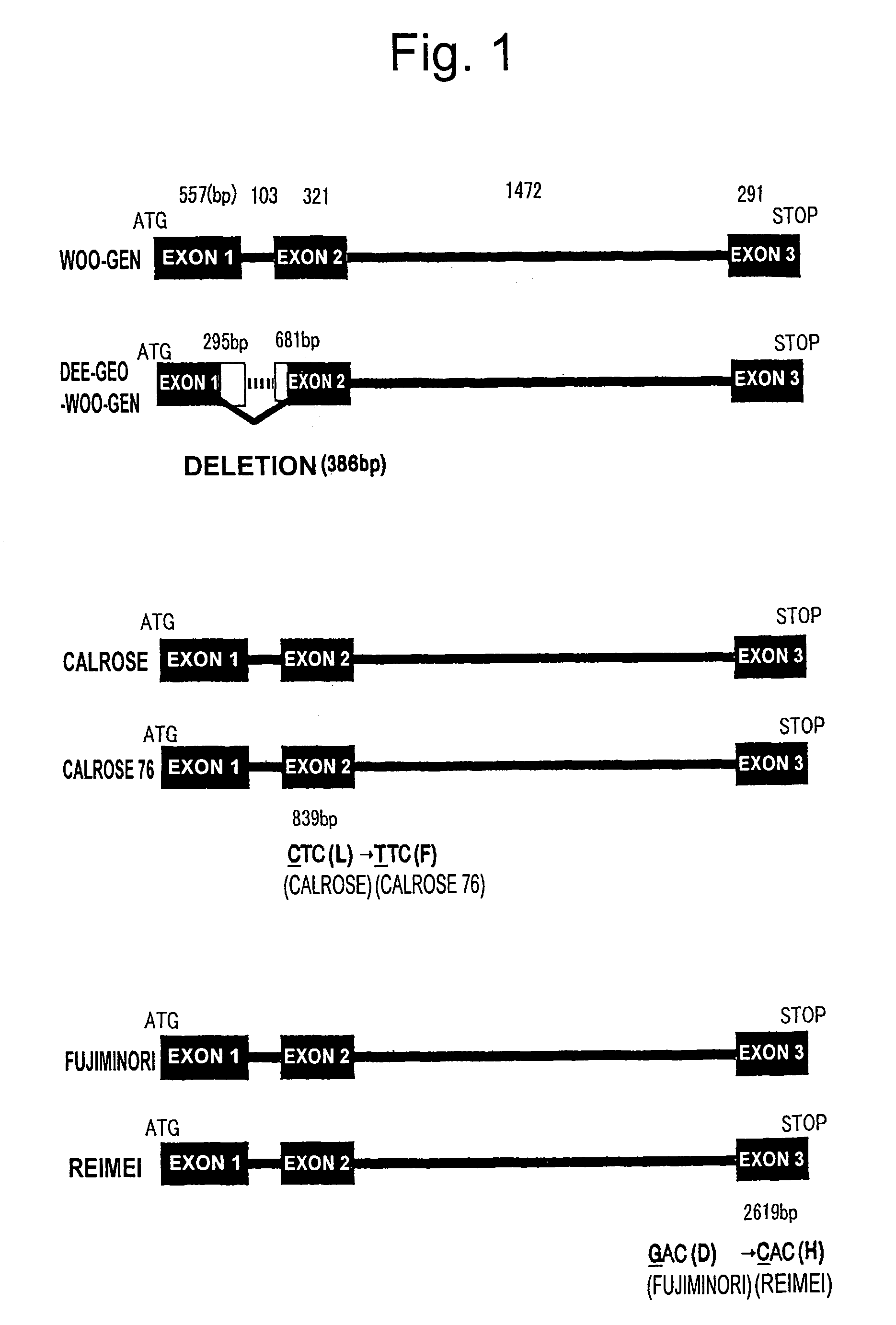Ga20 oxidase from rice and uses thereof
a technology of ga20 oxidase and rice, which is applied in the field of ga20 oxidase from rice, can solve the problems of reducing yield, isolation and identification of the sd1 gene of plants including rice, and has not yet been reported. achieve the effect of convenient preparation
- Summary
- Abstract
- Description
- Claims
- Application Information
AI Technical Summary
Benefits of technology
Problems solved by technology
Method used
Image
Examples
example 1
[0067]Based on the sequence of the Arabidopsis C20 oxidase gene, primers OsC20U (5′-ccgctcgccgagaagcgccg-3′ / SEQ ID NO: 1) and OsC20L (5′-atgaaggtgtcgccgatgtt-3′ / SEQ ID NO: 2) were designed. PCR was performed with the Nipponbare rice genomic DNA as a template, aiming to isolate the GA C20 oxidase gene of rice. As a result, an amplification product of 618 bp was obtained, and sequenced to reveal that it is a novel GA oxidase gene of rice. GAC20 belongs to the 2-oxoglutarate-dependent dioxygenase (2-ODD) family, conserving the functionally essential domain (NYYPXCXXP / SEQ ID NO: 5) for binding to 2-oxoglutarate. Furthermore, GAC20 also conserves three histidine residues to bind the Fe ion and the LPWKET (SEQ ID NO: 6) domain that may be involved in GA binding. The rice GAC20 gene shows a 50% homology to that of Arabidopsis. [Example 2].
example 2
[0068]Linkage analysis for the chromosomal locus of this novel GAC20 oxidase gene using BIL (1998; TAG 96: 997–1003, Mapping quantitative trait loci controlling seed dormancy and heading date in rice, Oryza sativa L., using backcross inbred lines.) revealed that the gene is located at about 155 cM on Rice Chromosome 1. This locus is extremely close to the locus of the sd1 gene, a fact which strongly indicates a possibility that the rice C20 oxidase gene is identical to the sd1 gene.
example 3
[0069]A genomic library was constructed from the wild type Nipponbare, and genome clones comprising the GAC20 oxidase gene were isolated using plaque hybridization methods to determine the whole nucleotide sequence of the gene (SEQ ID NO: 3). The deduced amino acid sequence of GAC20 oxidase is set forth in SEQ ID NO: 4.
PUM
 Login to View More
Login to View More Abstract
Description
Claims
Application Information
 Login to View More
Login to View More - R&D
- Intellectual Property
- Life Sciences
- Materials
- Tech Scout
- Unparalleled Data Quality
- Higher Quality Content
- 60% Fewer Hallucinations
Browse by: Latest US Patents, China's latest patents, Technical Efficacy Thesaurus, Application Domain, Technology Topic, Popular Technical Reports.
© 2025 PatSnap. All rights reserved.Legal|Privacy policy|Modern Slavery Act Transparency Statement|Sitemap|About US| Contact US: help@patsnap.com

